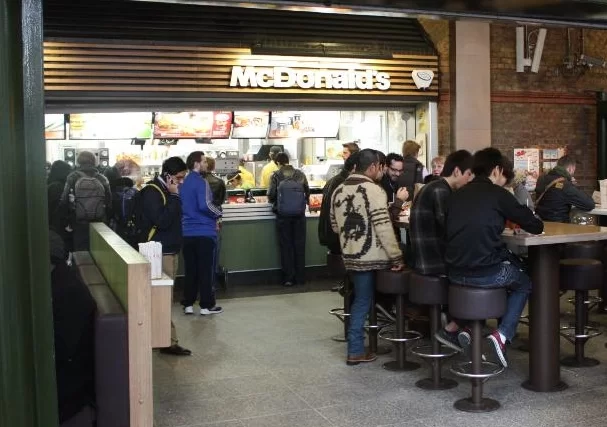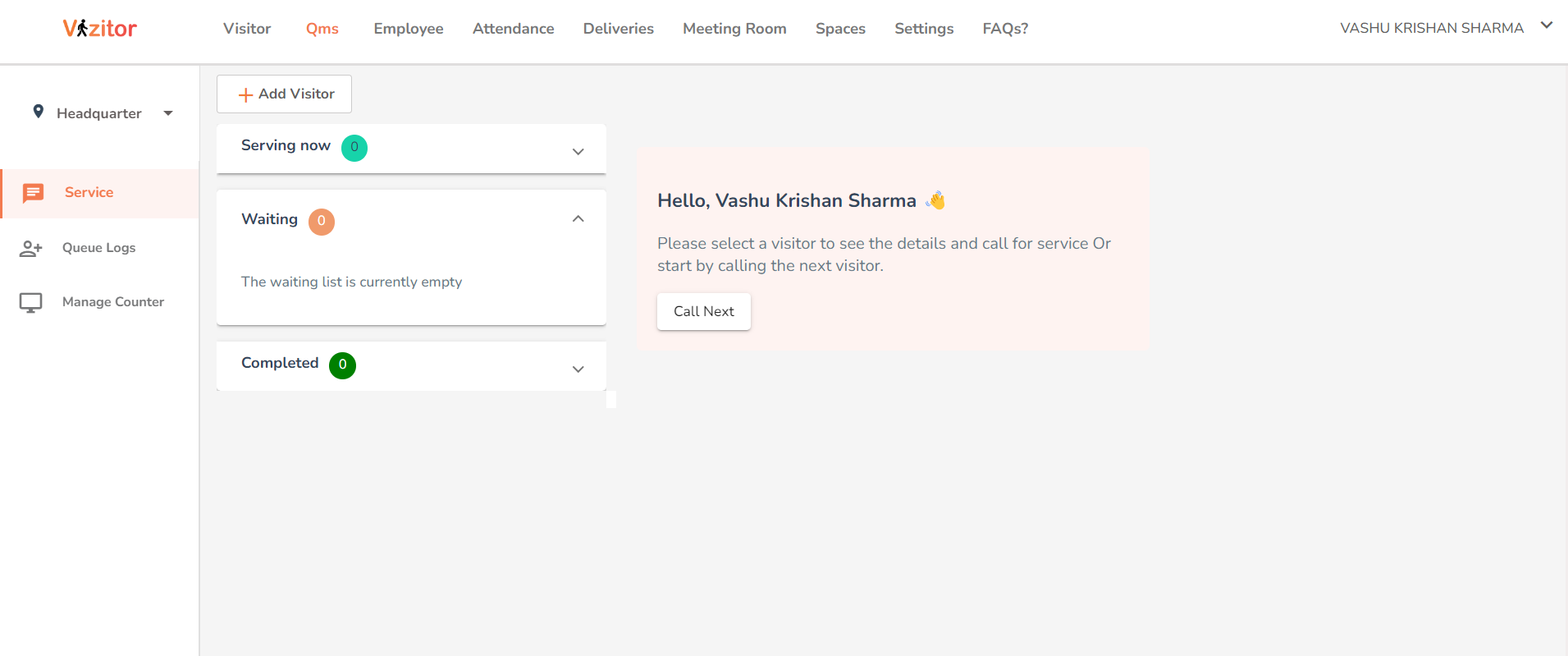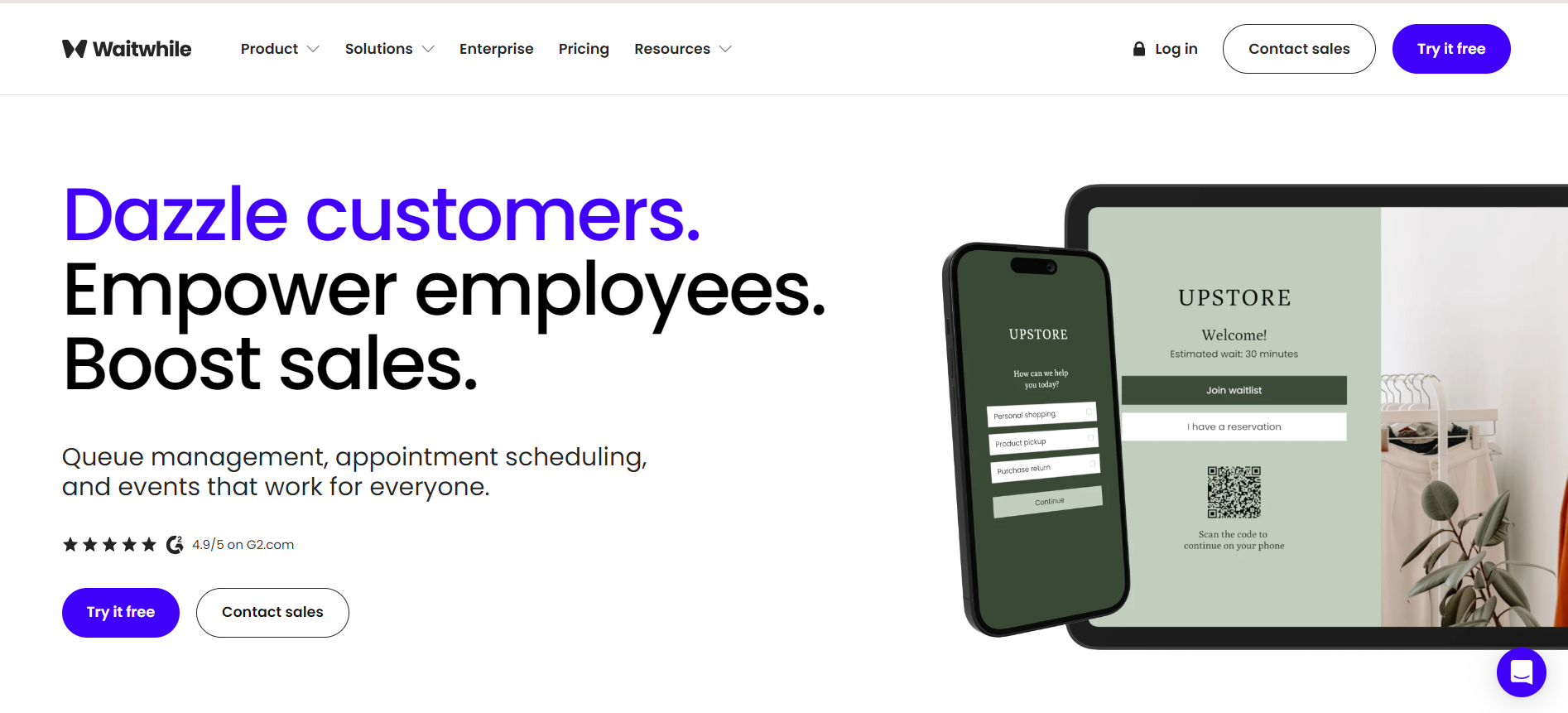Table of Content
Book a Demo Now!

Mon, May 13, 2024
Read in 10 minutes
Have you ever waited so long at a restaurant that your stomach starts growling louder than the background music? Managing long queues smartly in the fast-paced restaurant industry can turn that frustration into satisfaction. So, how can eateries ensure you’re seated and eating sooner rather than later?
Why Worry About Waiting?
Imagine slashing your wait time from an average of 23 minutes to just a few. Sounds great, right? Studies show that by cutting down wait times, restaurants could see a revenue boost of up to 15%! So, what’s the secret sauce to making queues disappear?
Enter the Restaurant Queue Management System—a game changer that uses the latest technology to whisk you to your table faster than ever. This system isn’t just about cutting down the wait. It’s about enhancing your dining experience, from the moment you step in, to the time you leave, all smiles and satisfied.

Got Time for a Quick Bite?
What if you could get a text telling you your table is ready while you enjoy a stroll nearby? Or check in with a single tap on your smartphone? That’s the magic of modern queue systems—they keep things moving smoothly so you can enjoy more of what you love—great food and good times.
Restaurants are now turning wait time into a breeze with smart technology that ensures you’re not just standing around. Isn’t it time your favorite restaurant got smarter with their queues?
Understanding the Impact of Queues on Restaurant Operations
Long wait times in restaurants can significantly impact customer satisfaction and the overall reputation of the establishment
• Customer Experience Deterioration: Extended waits can sour the dining experience, causing irritation and discomfort.
• Impact: Customers may leave negative reviews and choose not to return, directly affecting future patronage.

1. Statistical Insights:
• Research Findings: Studies indicate that reducing wait times by just 10 minutes can increase customer satisfaction, potentially boosting repeat visits by up to 20%.
• Customer Behavior: Surveys show that nearly 50% of customers would leave a restaurant if the wait was perceived as too long, illustrating a direct potential loss in revenue.
2. Reputation and Revenue:
• Long-term Effects: A reputation for long waits can deter new customers and affect the perceived value of the restaurant’s service.
• Competitive Disadvantage: Inefficient queue management may drive customers to competitors who offer quicker service, thus diminishing market share.

Implementing effective queue management strategies not only enhances the dining experience but also bolsters the restaurant’s reputation, encouraging both repeat and new business in a competitive culinary market.
Why Should Restaurants Care About Queue Management?
Some restaurants use queues to signal to potential customers that their food and service are in demand, more so than potential supply. It shows the success of your venture and the loyalty of the customer base that they are willing to wait any length of time to be served. They value the food and service that much.

1. Long Service Time Leaves Customers Disappointed
Isn’t it frustrating to finally get hold of a table but wait for a server to take your order? We cannot emphasize the importance of prompt table service enough. If customers are made to wait for prolonged periods, a chaotic environment affects their experience, and they end up ordering fewer food items. Due to slow table service, accommodating new customers becomes difficult, and you may lose out on customers.
2. Competitive Edge In The Food Industry
In a world where services are judged for time and convenience, a restaurant’s efficient queue management strategies determine the customer’s experience. Customers will prefer your service over competitors if you manage queues, regulate customer flow, and increase table turnover.
3. Improved Customer Compliance
The multitude of queue management software offers clear communication channels between customers and staff members at the restaurant. Keeping customers involved in the seating process and updating them on delays helps restaurants manage customer expectations. It improves order accuracy and reduces disagreements among customers and staff members.
4. Customer Experience
Providing your customers with an unforgettable experience at the restaurant is based on transparency in queue management, customization, and multiple service points. It comes with added benefits of higher volume orders and increased revenue.
5. Streamline Operations and Minimize Wait Times
86% of customers leave due to long queues. Our digital queue management system offers cutting-edge technology features that enable you to optimize operations, reduce wait times, and enhance the customer experience.
6. Reduce Staff Burnout
Queue management software automates repetitive tasks staff members have to carry out. Updating queue status manually, checking in customers, reserving seats, and dealing with difficult customers require integrity and patience. Chatbots and self-service kiosks are the new solutions to having an efficient team space that works effortlessly and promotes teamwork.
7. Build A Family Of Loyal Customers
Once you have implemented the above-discussed queueing strategies in your restaurant, maintain a consistent dining standard. When customers can join virtual queues, you make a hectic process easier. Working on customer feedback on queues and reaching out to them amends distrust and builds a close-knit family of loyal customers. Value your customer’s time and increase the pool of customers visiting your restaurant. Don’t forget, happy customers promote your restaurant by word-of-mouth marketing!
Challenges in Managing Restaurant Queues During Peak Times
1. Customer Satisfaction: Managing long wait times without losing customer interest is crucial. Unhappy customers are less likely to return or may leave negative reviews.
2. Space Limitations: Limited waiting areas can create congested spaces, making the waiting experience uncomfortable and potentially unsafe.
3. Balancing Staff: Ensuring that there are enough staff to manage both the queue and provide timely service can be difficult, especially when predicting the exact customer load is challenging.
4. Efficient Table Management: Quickly turning over tables while maintaining a quality dining experience requires precise coordination and timing.
5. Handling Mixed Groups: Balancing the needs of both reserved and walk-in customers often leads to conflicts and logistical headaches.
6. Effective Communication: Keeping both staff and customers informed about wait times and table availability can prevent misunderstandings and improve service efficiency.
7. Technological Integration: While beneficial, implementing new technologies like digital queue systems or apps can be costly and require training for staff and acceptance by customers.
How to Manage Long Queues in Restaurants?
1. Reduce Wait Times for Better Customer Satisfaction: Waiting too long for service can frustrate customers. Quick and attentive table service not only enhances customer satisfaction but also increases food orders. If service is too slow, it can be harder to seat new customers, leading to lost opportunities.
2. Gain a Competitive Edge: In the fast-paced food industry, efficient queue management is key to enhancing customer experiences. By effectively managing queues and streamlining customer flow, you can improve table turnover and become the preferred choice over competitors.
3. Enhance Customer Compliance: Utilize queue management software to establish clear communication between your staff and customers. Keeping customers informed about their wait times and any delays helps manage expectations, improves order accuracy, and reduces conflicts.
4. Elevate the Customer Experience: Create an unforgettable dining experience with transparent queue management and personalized service options. This approach not only increases order volume but also boosts overall revenue.
5. Minimize Staff Burnout: Queue management tools can automate many of the repetitive tasks that staff face, such as updating queue status and checking in guests. Implementing solutions like chatbots and self-service kiosks can streamline operations and sign up now to explore more.
6. Cultivate a Loyal Customer Base: Implement effective queuing strategies to maintain high standards of service and ease the dining process for customers. Engaging with customers through feedback and proactive communication can help build trust and foster a loyal community. Remember, satisfied customers often become advocates for your business through word-of-mouth.
7. Leverage Data Analytics for Insightful Decision Making: Incorporating data analytics into your queue management can dramatically improve decision-making. For instance, analyzing peak times and customer flow patterns can help optimize staff allocation and menu offerings. According to industry reports, restaurants that use data-driven strategies see a 10-15% increase in efficiency.
8. Adapt to Modern Technology Trends: Staying updated with the latest technology trends can give your restaurant an edge. For example, integrating mobile ordering systems has been shown to reduce customer wait times by 30%, according to a recent study. Furthermore, leveraging technologies such as digital menus and payment systems can enhance the overall dining experience and operational efficiency.
A Case Study of Queue management system: Keeping Customers Lovin’ It at McDonald’s
Let’s face it, McDonald’s knows a thing or two about queues. They serve millions of happy customers every day, and guess what? They rely on queue management systems to keep things running smoothly.

Imagine a McDonald’s during peak lunch hour. Without a system, the lines would be a chaotic mess. But thanks to their queue management setup, things run like clockwork.
Here’s how it works:
• Digital ordering kiosks: Customers can browse the menu, customize their orders, and pay without waiting in line. This frees up staff to focus on fulfilling orders quickly.
• Order tracking displays: Customers can see their order status and estimated wait time, reducing frustration and anxiety.
• Clear signage: The restaurant layout is easy to navigate, with designated queuing areas and pick-up points.
By implementing these simple queue management solutions, McDonald’s ensures a positive experience for their customers. People know what to expect, wait times are clear, and the overall flow is efficient. It’s a win-win for everyone!
Your restaurant can achieve the same level of success. Invest in a queue management system that keeps your customers happy and your business thriving.
Best Queue Management Tools for Restaurants
As we know Long lines can frustrate customers and hurt your restaurant’s brand name. But now, there are a variety of queue management tools available to help you streamline your operation and keep customers happy. Here are some of the top QMSs.

Vizitor: Your Smart Queue Management Solution
Alongside these popular options, consider Vizitor’s queue management system. Vizitor offers a cloud-based solution packed with features to enhance your restaurant’s flow:

• Automatic service assignment: Direct customers to the appropriate staff member based on their needs.
• Real-time updates: Keep customers informed with transparent wait times and queue position updates.
• Straightforward navigation: A user-friendly interface ensures a smooth experience for both staff and customers.
More Popular Queue Management Systems:
Waitwhile:
This popular system allows customers to join a virtual queue from their phones, see wait times, and browse menus. They receive a notification when their turn is up.

QLess:
Qless Offers virtual queuing, SMS notifications, and real-time wait time updates, QLess integrates with popular point-of-sale systems for smooth order tracking and queue and customer management.

Here’s how restaurants can manage queues better with simple things:
• Simple Pen & Paper: A quick and easy way to track waiting customers. Draw a table to plan seating and predict wait times.
• Tech it Up: Upgrade to a computer or tablet for easier tracking and faster service with a Queue management system.
• Text Alerts: Give guests a heads-up when their table is almost ready. This allows them to explore the area or grab a drink elsewhere.
• Automated Systems: These can handle most of the queue management, but still rely on staff input.
• Embrace the Queue: Make the wait enjoyable with drinks, snacks, or even games!
Choosing the Right System for Your Restaurant
The ideal queue management system depends on your specific needs and budget. Here are some factors to consider:
• Restaurant size and type: Larger restaurants or those with high foot traffic may benefit from more robust features.
• Budget: Compare pricing plans and features to find the best fit for your resources.
• Features needed: Prioritize the functionalities most crucial for your operation.
• Ease of use: Ensure both staff and customers can comfortably navigate the chosen system.
Invest in a Queue Management System and Keep Customers Coming Back
By implementing a queue management system, you can significantly improve customer experience and manage the queues. Reduced wait times, increased transparency, and a smoother overall flow. Just sign up now for free and know how this system works.





